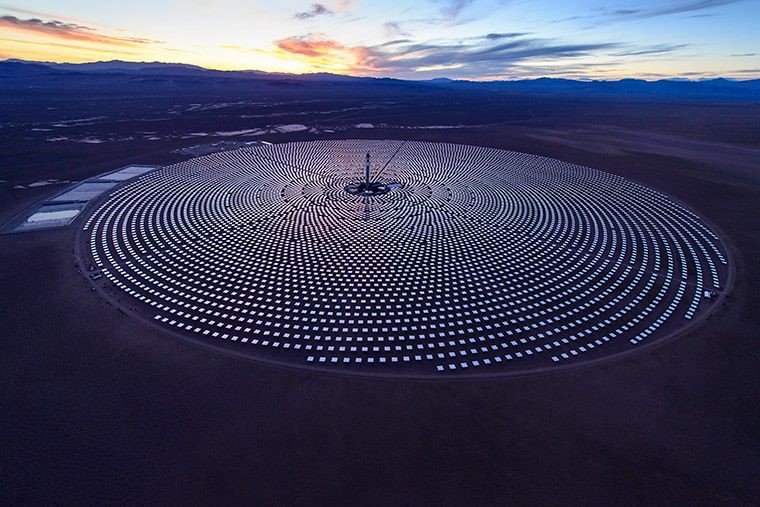President Donald Trump has reportedly tapped a longtime renewable energy antagonist with ties to the Koch brothers to lead the Office of Energy Efficiency and Renewable Energy (EERE).
According to an internal memo first reported by E&E News, the president has picked Daniel Simmons to lead the Department of Energy’s office that focuses on supporting and developing renewable energy and energy efficiency technologies. EERE‘s work currently includes investments in electric vehicles; solar, geothermal and wind energy; and technologies to reduce energy use in U.S. buildings.
Daniel Simmons’ Longstanding Ties to the Kochs
Before Simmons joined the then President-elect’s transition team to the DOE in January, he served multiple roles at the Institute for Energy Research (IER), most recently as Vice President for Policy. IER is a Koch-affiliated non-profit think tank that focuses on “energy analysis and free-market energy and environmental policy,” offering reports and analysis criticizing plans to lower emissions and attacking renewable energy.
Simmons is also currently listed as a Policy Expert on the Heartland Institute’s website.
Before joining IER, Simmons was Director of the Natural Resources Task Force at the American Legislative Exchange Council (ALEC), the Koch-tied organization designed to link state legislators with corporations and create templates for state legislation.
Simmons’ old boss at IER, President Tom Pyle, served as the head of then President-elect Trump’s energy transition team.
Daniel Simmons’ History of Attacks on Renewable Energy
A quick review of Simmons’ commentary and publications while at IER, Heartland, and ALEC leaves little doubt about how he feels about the office he is now set to run.
In a blog post for IER, Simmons criticized one of the federal government’s most effective energy efficiency measures—efficiency standards for light bulbs. “Does the federal government think we are dim bulbs,” the post asks. Simmons calls the efficiency standards a “bulb ban” and encourages readers to order as many incandescent bulbs as possible from Amazon before the regulation kicked in.
Simmons regularly criticized any federal support for wind power, as he did in this 2013 op-ed for U.S. News and World Report:
In his 2011 State of the Union address, President Obama pledged to eliminate federal programs that are “excess weight.” If the president still wants to keep this promise, he could start by tackling federal subsidies for wind energy.
He went on to directly criticize the Department of Energy’s investments in wind:
DOE and USDA are important to highlight because they were responsible for almost half of the initiatives (36 of 82) in FY 2011, while DOE led all agencies with 22 initiatives. Additionally, these agencies have more discretion than other agencies to decide which projects to support.
As such, GAO recommends DOE and USDA formally assess and document whether the success of a project depends on federal support. That would be a start, but ultimately the federal government should get out of the business of betting taxpayer dollars on energy projects and instead let the American themselves people vote with their pocketbook on which projects should succeed.

In a blog post for IER, Simmons slams wind power for hurting farmers. This despite the fact that rural landowners are benefiting the most from wind power—it’s already paying rural landowners roughly $222 million per year, and that figure is expected to rise to nearly $1 billion annually by 2030—and farmers are calling wind development “our financial future.”
In yet another post, Simmons calls wind turbines “cuisinarts of the sky.”
Though Simmons critiques wind power above all else, he has always found scathing words for solar as well. In a blog post called “Greengate,” Simmons compared the failure of solar company Solyndra, which cost the DOE $528 million in loan guarantees, to the historic Enron collapse. (The DOE program that administered the loan to Solyndra is actually on track to net taxpayers $5-6 billion in profits, according to Bloomberg.)
Simmons has been particularly vocal about the DOE‘s loan guarantee programs, which he mis-characterizes regularly as direct spending, despite the fact that the program has, again, earned taxpayers money.
There are dozens more instances of Simmons directly criticizing the value of projects that are run by the very office he is set to lead. In this way, his appointmnt follows one particular Trump pattern, echoing the selection of longtime EPA critic Scott Pruitt to run that agency.
An official announcement has not yet been made about the Simmons appointment, and the position will require Senate confirmation. Until then, Simmons will serve as acting assistant secretary.
A version of this article is cross-posted on KochvsClean.com
Feature image: The 110 megawatt Crescent Dunes Solar Energy Plant in Nevada is the first utility-scale facility in the world to use advanced molten salt technology to store energy and deliver solar energy overnight. The technology was developed with funding from the SunShot Initiative, one of the EERE programs that Simmons has regularly criticized. Credit: Department of Energy’s Office of Energy Efficiency and Renewable Energy
Subscribe to our newsletter
Stay up to date with DeSmog news and alerts







